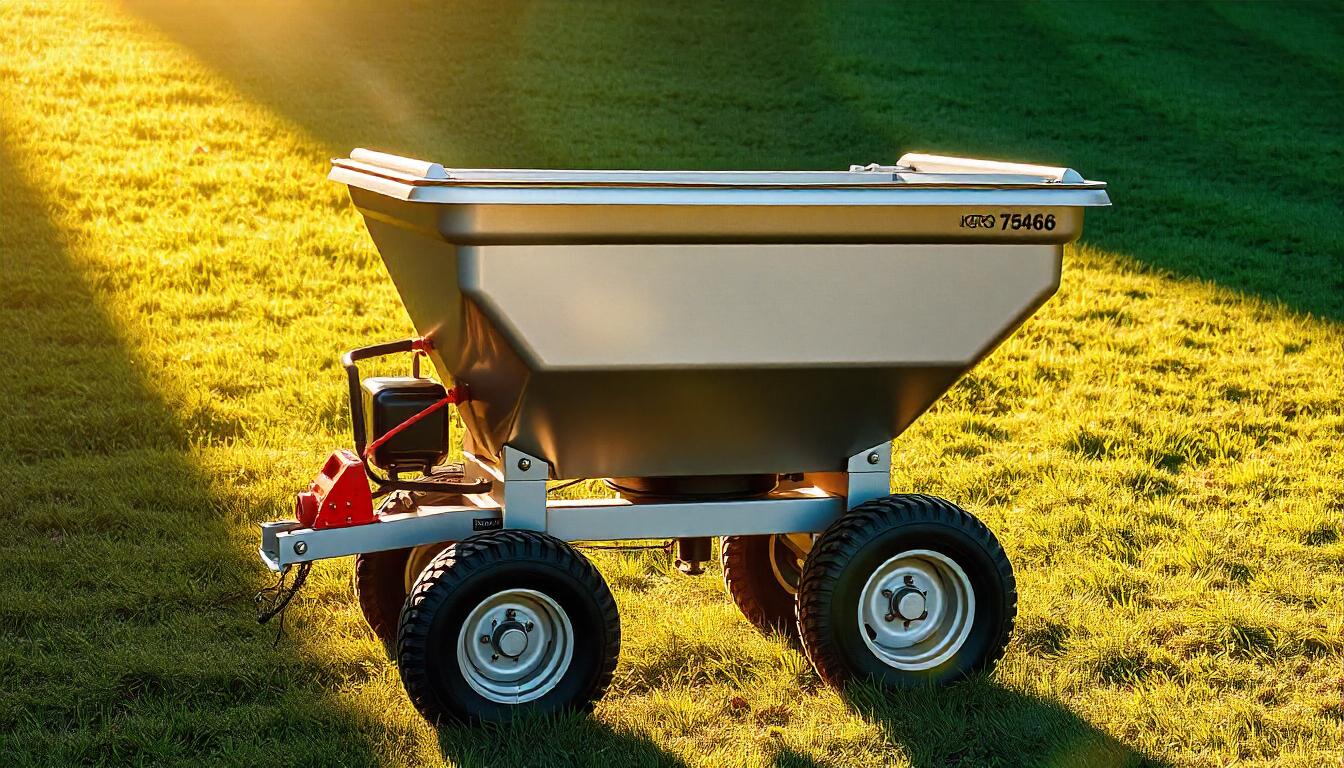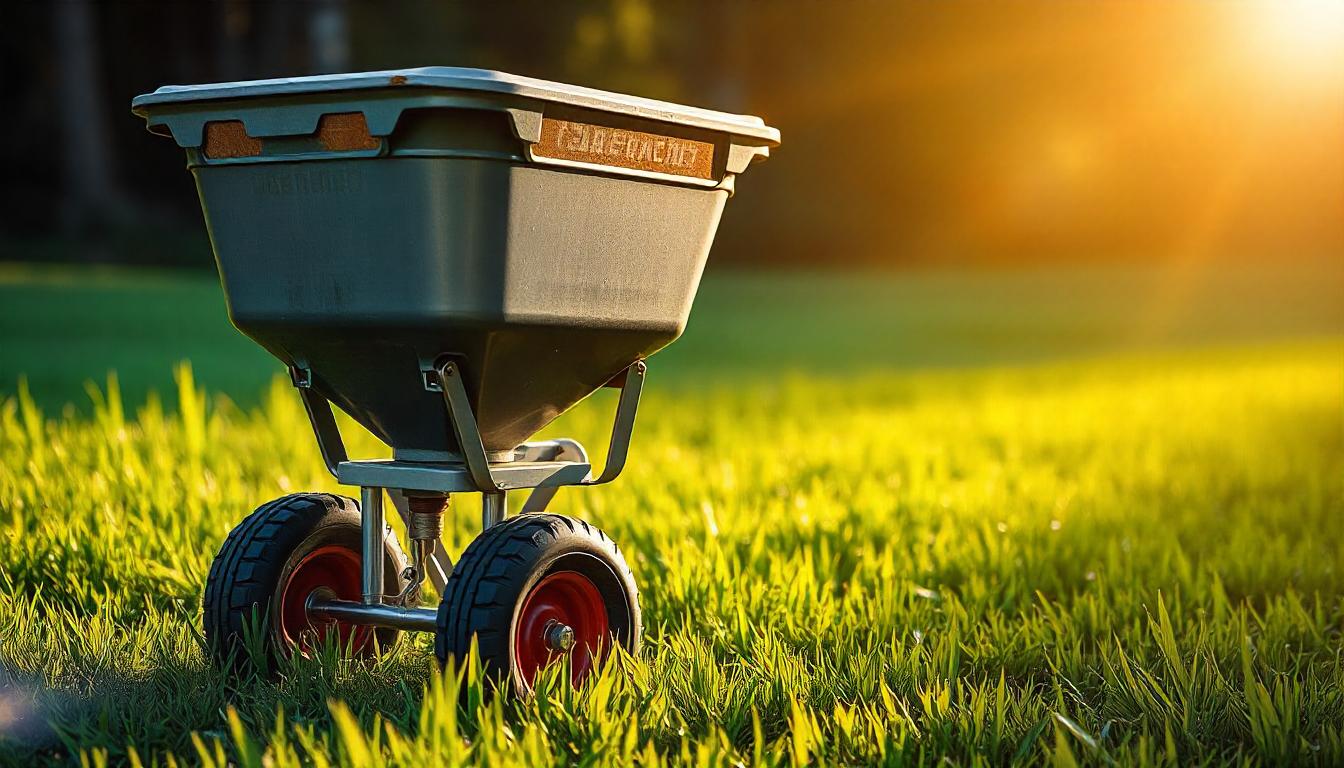Tech
KGRO 75466: Revolutionizing Agricultural Technology
Published
10 months agoon
By
Amolia
In the evolving landscape of agriculture, the need for effective, sustainable solutions has never been more pressing. Farmers around the globe face increasing pressure to meet food demands, maintain soil health, and adopt environmentally responsible practices. KGRO 75466, a modern, high-performance fertilizer blend, is at the forefront of agricultural innovation, offering an eco-friendly approach to maximizing crop yields and promoting soil health. Here, we explore KGRO 75466 in detail, looking at its ingredients, mechanisms, benefits, and how it aligns with sustainable agriculture goals.
Understanding KGRO 75466: What Sets It Apart?
KGRO 75466 is formulated with a blend of essential nutrients and organic materials, designed to support crop growth, resilience, and soil vitality. Unlike traditional chemical fertilizers that focus primarily on immediate nutrient release, KGRO 75466 employs a slow-release mechanism. This approach not only reduces waste and environmental impact but also ensures that plants receive a steady nutrient supply throughout their growth cycle. By focusing on both crop productivity and soil health, KGRO 75466 is ideal for farmers committed to long-term sustainability.
Composition of KGRO 75466: Ingredients and Their Roles
Every component of KGRO 75466 serves a specific function that benefits plant health, soil structure, and overall ecosystem balance. Below are some of the key ingredients in KGRO 75466:

KGRO 75466
- Nitrogen (N): Often regarded as the “building block” of plant growth, nitrogen is essential for healthy foliage and stem development. In KGRO 75466, nitrogen is available in a slow-release form, allowing for steady uptake without the risk of nutrient “burn” or loss to leaching.
- Phosphorus (P): Phosphorus is crucial for root development, seed formation, and energy transfer within plants. KGRO 75466 includes phosphorus in a highly available form that aids in quick uptake, supporting early-stage growth and resilience during the flowering and fruiting phases.
- Potassium (K): Potassium helps plants build resilience against drought, disease, and extreme weather conditions. This nutrient also plays a role in enzyme activation, making it essential for processes like photosynthesis. In KGRO 75466, potassium enhances the overall vigor of the crop, ensuring that plants are better equipped to handle stress.
- Organic Components: The organic matter in KGRO 75466 aids in improving soil structure, moisture retention, and microbial activity. These organic compounds serve as a food source for beneficial soil organisms, which help decompose organic matter, release nutrients, and improve soil aeration. Over time, these factors contribute to a healthier, more resilient soil ecosystem.
- Trace Minerals: While required in smaller amounts, trace minerals like magnesium, zinc, and manganese are essential for photosynthesis, chlorophyll production, and enzyme activation. KGRO 75466’s balanced trace mineral profile ensures that plants have access to these elements, reducing nutrient deficiencies and promoting healthier crop development.
Key Benefits of KGRO 75466 for Modern Farming
The advanced formulation of KGRO 75466 provides a range of benefits that align with the goals of modern, sustainable agriculture:
- Enhanced Crop Yields: By supplying nutrients in a form that plants can readily absorb, KGRO 75466 promotes optimal growth and maximizes yields. The balanced nutrient profile ensures that plants have everything they need at every stage of development, from early growth to harvest.
- Improved Soil Health: Unlike synthetic fertilizers that may deplete soil over time, KGRO 75466’s inclusion of organic components supports soil microbial life, structure, and long-term fertility. Healthier soil translates into higher-quality crops and a more sustainable farming ecosystem.
- Environmental Sustainability: KGRO 75466’s slow-release design minimizes leaching and runoff, which are common issues with traditional fertilizers. This not only protects nearby water bodies but also reduces the amount of fertilizer required over time, making it a more eco-friendly choice.
- Reduced Input Costs: Because of its efficiency and effectiveness, KGRO 75466 reduces the need for frequent applications, allowing farmers to save on input costs without sacrificing crop health or yield.
Ideal Application Methods for KGRO 75466
To make the most of KGRO 75466’s benefits, proper application methods are essential. Here are some tips for applying KGRO 75466 effectively:
- Pre-Planting Soil Testing: Before applying KGRO 75466, a soil test can help determine the nutrient needs of your field. Soil testing ensures that you’re not overapplying or underapplying nutrients, allowing you to make adjustments based on actual soil conditions.
- Application Timing: For most crops, applying KGRO 75466 at the beginning of the growing season is ideal. This ensures that young plants have access to essential nutrients when they need them most. In the case of perennial crops, splitting the application between spring and fall may provide the best results.
- Even Distribution: When applying KGRO 75466 to larger fields, using equipment like broadcast spreaders or precision applicators can help achieve even distribution. This method ensures that all plants receive the same nutrient benefits, preventing patchy growth or nutrient imbalances.
- Regular Monitoring: Throughout the growing season, monitoring plant health and soil conditions can help you gauge the effectiveness of KGRO 75466. Observing your crops’ growth patterns, leaf color, and overall vitality will offer clues about any adjustments needed.
KGRO 75466’s Role in Sustainable Agriculture Practices
One of the most valuable aspects of KGRO 75466 is its alignment with sustainable agriculture practices. As farmers and agricultural organizations worldwide work towards reducing the environmental impact of farming, products like KGRO 75466 are becoming more vital in achieving this balance. Here’s how KGRO 75466 supports sustainability:
- Reduced Carbon Footprint: KGRO75466 reduces the need for excessive fertilizer applications by enhancing nutrient efficiency and minimizing runoff. This decreases the energy and resources required for fertilizer production and transport, lowering the farm’s carbon footprint.
- Less Soil Erosion: Because KGRO75466 improves soil structure, it can help reduce soil erosion. Healthier soil is more stable, meaning it is less likely to wash away in heavy rains. Over time, this protects land quality and maintains its productivity.
- Biodiversity Preservation: Traditional fertilizers can sometimes disrupt local ecosystems by contaminating waterways, and affecting fish and aquatic plants. KGRO 75466’s slow-release and low-leaching formulation supports biodiversity by minimizing the risk of waterway pollution.
Potential Challenges and Solutions in Using KGRO 75466
While KGRO75466 offers numerous benefits, there are some challenges and best practices to consider:
- Application Consistency: Ensuring even distribution is essential for uniform crop growth. Using proper equipment and techniques can help address this challenge.
- Soil Testing: Farmers who skip soil testing may inadvertently overapply or underapply the product, reducing its effectiveness. Conducting regular soil tests will help fine-tune application rates and maximize the benefits of KGRO75466.
- Initial Investment: While KGRO75466 can reduce costs over time, the initial cost may be higher than traditional fertilizers. However, the efficiency, reduced frequency of application, and enhanced yield offset this initial expense in the long term.
Conclusion
KGRO 75466 is a forward-thinking solution for modern agriculture, bringing together plant nutrition, soil health, and sustainability. With its unique blend of nutrients, organic materials, and slow-release technology, KGRO75466 is designed to meet the needs of crops and the environment. Farmers who choose KGRO75466 can look forward to healthier plants, higher yields, and a more resilient farming ecosystem, all while taking significant strides toward more sustainable and responsible agricultural practices.
Frequently Asked Questions
Is KGRO75466 safe for organic farms?
KGRO75466 contains organic materials that support soil health. However, it’s best to consult with certification standards specific to your region to ensure it align with organic farming requirements.
How can KGRO75466 be stored safely?
Store KGRO75466 in a cool, dry place, away from moisture and direct sunlight. Sealed containers are recommended to maintain their potency over time.
Can KGRO75466 be used for hydroponic farming?
KGRO75466 is formulated for soil-based agriculture, as its organic components require microbial activity in the soil for full effectiveness. It may not be ideal for hydroponic systems.
What crops benefit the most from KGRO75466?
KGRO75466 is suitable for various crops, including grains, vegetables, fruits, and even ornamentals. Customizing the application rate for each crop type will yield the best results.
Does KGRO 75466 reduce pest pressure?
While not a pesticide, the improved soil and plant health associated with KGRO75466 can make plants more resilient to certain pests and diseases.
What are the benefits of KGRO75466 compared to traditional fertilizers?
Unlike traditional fertilizers, KGRO75466 minimizes nutrient waste, supports soil health, and aligns with sustainable farming practices by promoting efficient nutrient uptake and reducing environmental impact.

